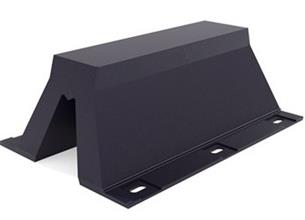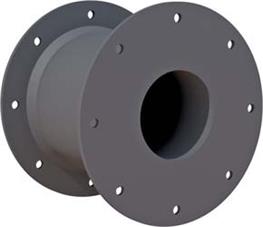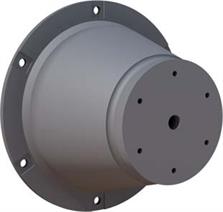Mooring Rope Maintenance
Rope strength and durability depend on periodic inspection and a level of maintenance.
High performance racing sailboat crews routinely inspect halyards, sheets, and other working lines every few hours, looking for evidence of chafe. Workboat crews should do so at least every few weeks, and more often if conditions warrant. It is easy to take up an armʼs length of rope at critical points and hold it up to sight along it to look for chafe, cuts, broken strands, and other deformation such as bulging or flattened spots, glazed or burned spots, and discoloration that would indicate wear or deterioration. Any time a line has cut strands, obvious chafe, or a decrease of 10% in overall diameter, the damaged part should be cut off, or the whole thing replaced. Lines, such as anchor rodes, that suffer most of their damage at one end should be cut back or reversed end for end at least annually and more frequently as conditions dictate.
Obviously, chafe protection is critical for the life of any line aboard a boat. It is important to keep various kinds of chafing gear handy, including rags than can be wrapped temporarily around a chafe point, and split garden or fire hose that can be secured around a line with wire ties, twine, or hose clamps. Careful inspection should be given to sheaves, rollers, chocks, and other points where burrs or corrosion could chafe the lines that pass over or through them.
Dirt causes internal abrasion of fibers, as will rust scale or powder from metal corrosion, and even salt crystals. Rust (iron oxide) weakens and destroys nylon. Rope should be washed with freshwater occasionally but, unless it is necessary to remove oil or grease, donʼt use detergents. Manufacturers coat the fibers with a preservative/lubricant to reduce friction within the strands when the rope is working, and detergents can remove the coating. Marine overlay finishes are available that restore water- and abrasion resistance to rope fibers.
Rope must be kept clean of solvents, acids and alkalies, either as fluids or fumes.
Despite their relative resistance to UV, rot, and mildew, rope stored for long periods of time should be kept off the floor in a cool, dry, well-ventilated location out of direct exposure to sunlight.
High performance racing sailboat crews routinely inspect halyards, sheets, and other working lines every few hours, looking for evidence of chafe. Workboat crews should do so at least every few weeks, and more often if conditions warrant. It is easy to take up an armʼs length of rope at critical points and hold it up to sight along it to look for chafe, cuts, broken strands, and other deformation such as bulging or flattened spots, glazed or burned spots, and discoloration that would indicate wear or deterioration. Any time a line has cut strands, obvious chafe, or a decrease of 10% in overall diameter, the damaged part should be cut off, or the whole thing replaced. Lines, such as anchor rodes, that suffer most of their damage at one end should be cut back or reversed end for end at least annually and more frequently as conditions dictate.
Obviously, chafe protection is critical for the life of any line aboard a boat. It is important to keep various kinds of chafing gear handy, including rags than can be wrapped temporarily around a chafe point, and split garden or fire hose that can be secured around a line with wire ties, twine, or hose clamps. Careful inspection should be given to sheaves, rollers, chocks, and other points where burrs or corrosion could chafe the lines that pass over or through them.
Dirt causes internal abrasion of fibers, as will rust scale or powder from metal corrosion, and even salt crystals. Rust (iron oxide) weakens and destroys nylon. Rope should be washed with freshwater occasionally but, unless it is necessary to remove oil or grease, donʼt use detergents. Manufacturers coat the fibers with a preservative/lubricant to reduce friction within the strands when the rope is working, and detergents can remove the coating. Marine overlay finishes are available that restore water- and abrasion resistance to rope fibers.
Rope must be kept clean of solvents, acids and alkalies, either as fluids or fumes.
Despite their relative resistance to UV, rot, and mildew, rope stored for long periods of time should be kept off the floor in a cool, dry, well-ventilated location out of direct exposure to sunlight.
Product Categories
Contact Info
E-mail: info@dolphinmarines.com
Tel: 00852-29738324
Fax: 00852-21159613

 info@dolphinmarines.com
info@dolphinmarines.com

